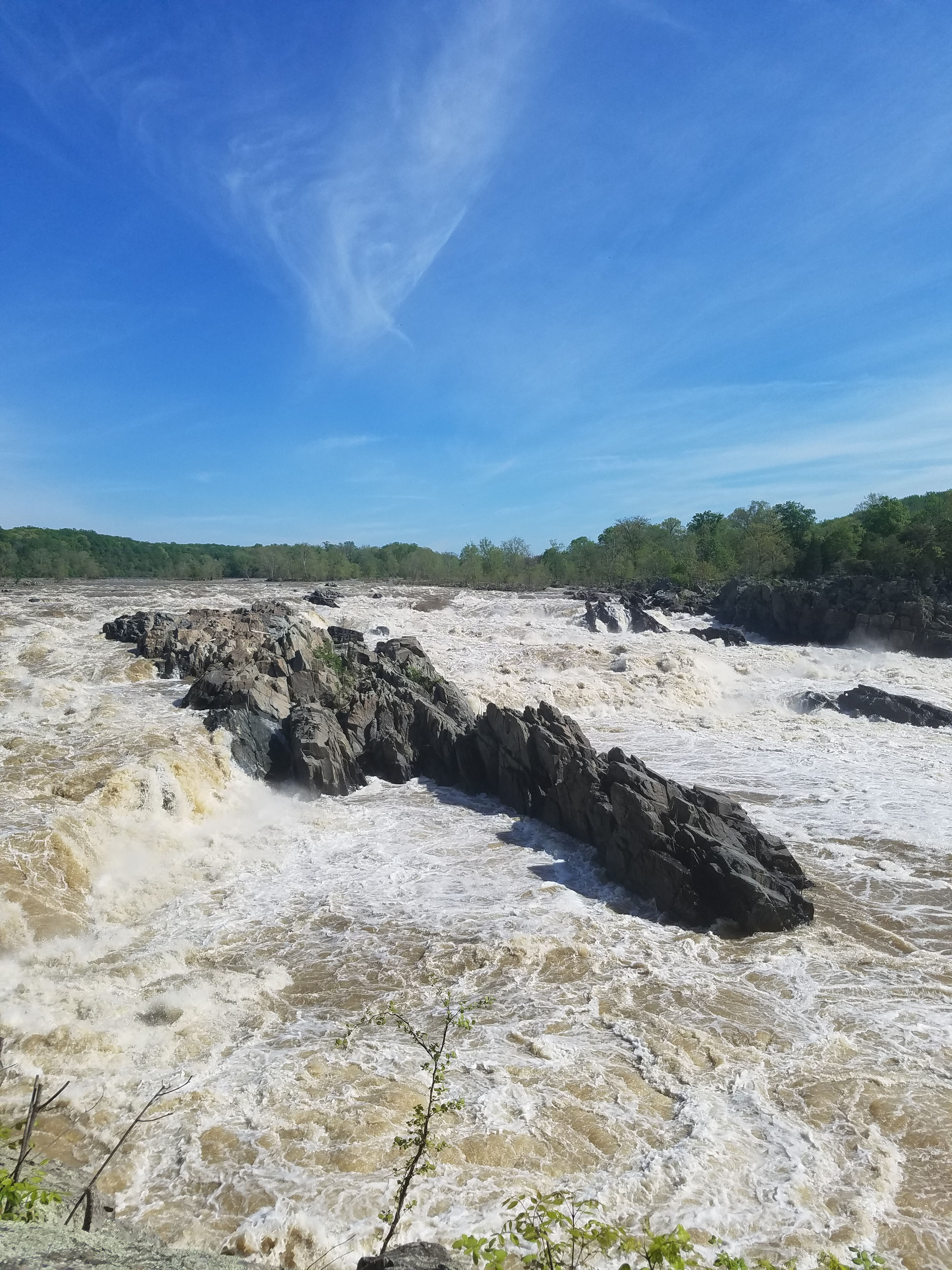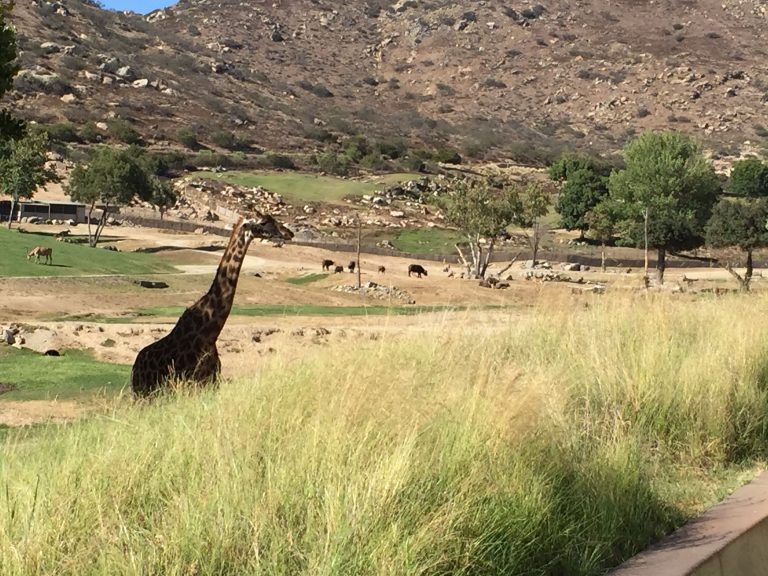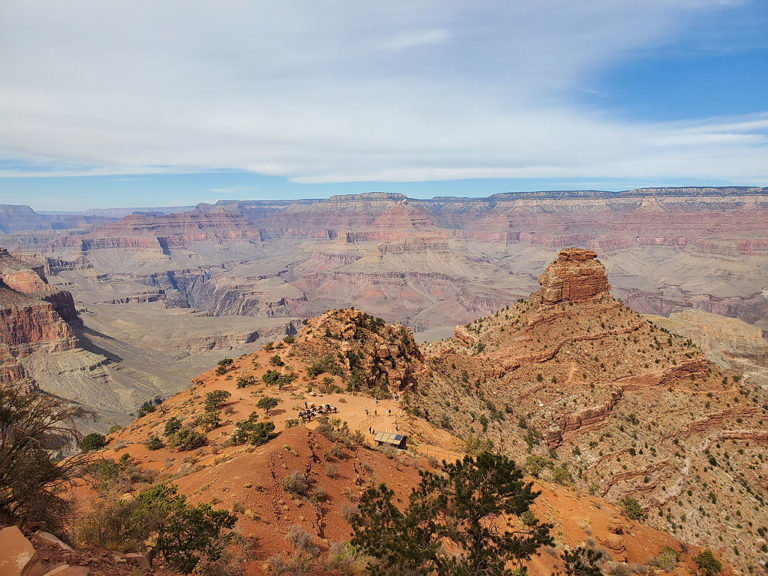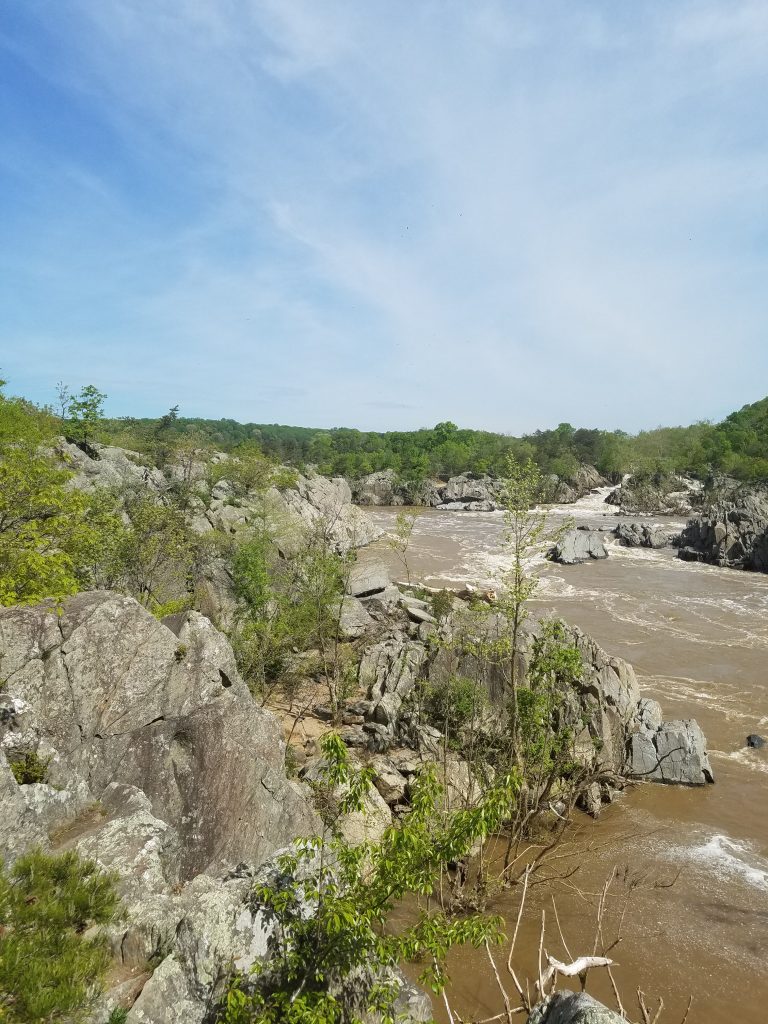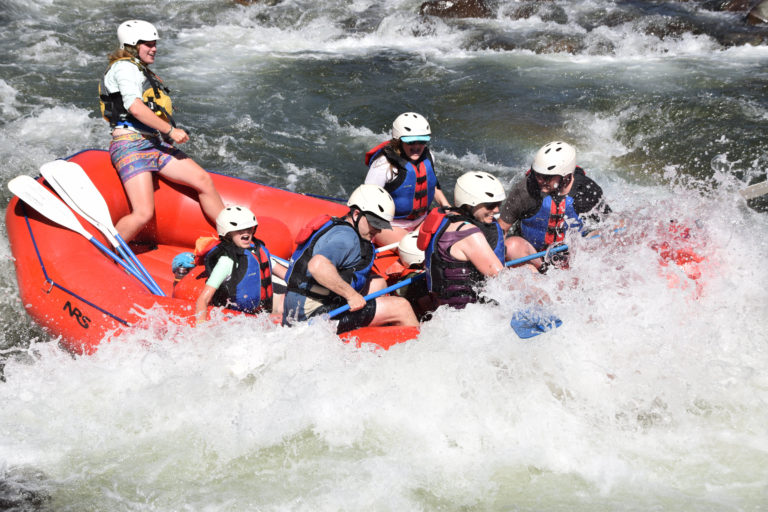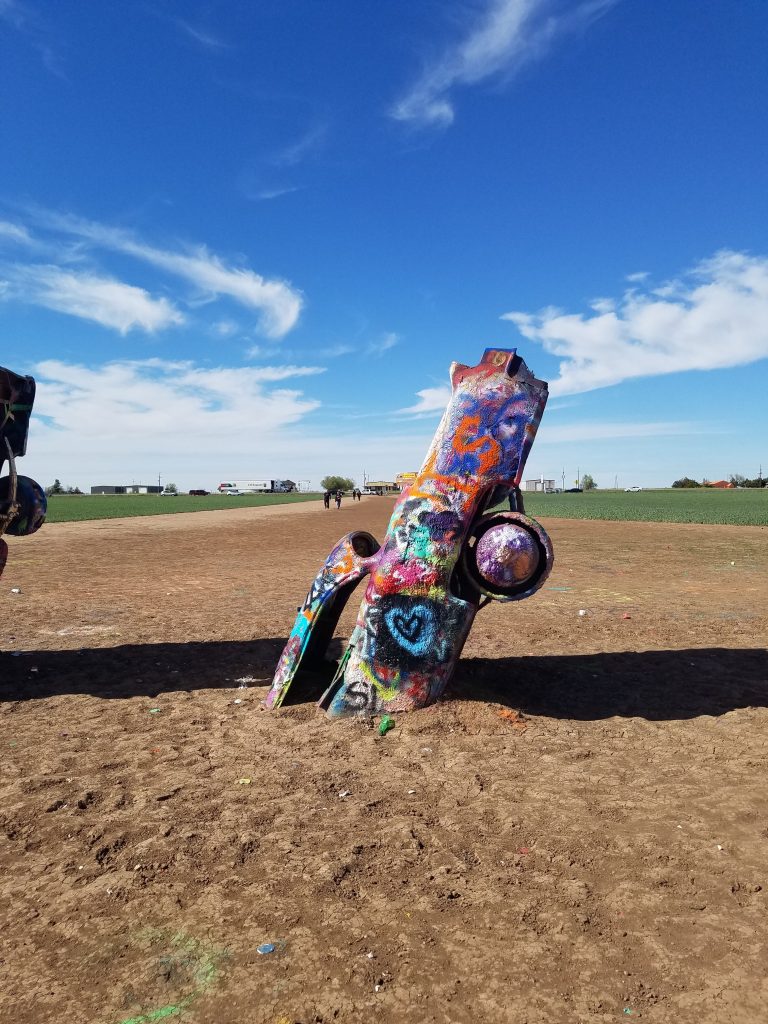Guide to Great Falls National Park
Great Falls National Park is right outside Washington, D.C. This is a prime area for hiking and outdoor activities. However, just viewing the spectacular falls makes Great Falls worth a visit.
Jump Ahead To
Overview
WEBSITE: https://www.nps.gov/grfa/index.htm
Great Falls National Park is located about a 15 mile drive up the Potomac River from the nation’s capital. At 800 acres, it is fairly small for a national park. However, it feels miles away from the big city and there are some great hiking opportunities.
Note there are actually two parks in this area split by the Potomac River which acts a boundary between Virginia and Maryland. Great Falls National Park is on the Virginia side. Directly across the Potomac River, on the Maryland side, is Chesapeake and Ohio Canal National Historic Park. We will be covering that park separately.
The confusion is caused because the visitor center at Chesapeake and Ohio Canal National Historic Park is called the Great Falls Tavern Visitor Center. The two visitor centers are right across the river from each other. However, driving between the two takes about 30 minutes.
Great Falls is a series of waterfalls located where the Potomac River narrows. Over about a mile, the river drops about 100 feet into an area known as Mather Gorge.
A number of canals were built along the river. The Patowmack Canal was started by George Washington. It is no longer operable, but you can still see portions of it.

Cost
The costs of entering Great Falls National Park is a flat $15 for each vehicle ($7 by foot or on bike). This gets you access for 7 straight days. For $30 you can buy an annual pass. The National Park system is relatively inexpensive, even if you are only visiting for a few hours this is a bargain attraction.
If you are planning on visiting multiple national parks in a given year we strongly recommend the annual America the Beautiful National Park Pass. For $80 a year this allows entrance to most national parks for a year (exceptions include places like Alcatraz). Most national parks charge per vehicle so pretty much an entire family (or however many people you can jam into your car or RV) can get in on one pass. Note U.S. Military get in for free and people over the age of 62 get a lifetime pass for $80. If you are lucky to have a fourth grader you can get a free pass that works for the entire family.
When to Go
Great Falls National Park is an outdoor activity so obviously you want nice weather. Unfortunately, this also brings crowds. When the weather is good in the Washington, D.C. area people tend to flock to Great Falls. We have heard of waiting an hour to get into the park on nice weekends (Saturday and Sunday)
Our many visits to Great Falls have been on weekdays in the fall, spring and summer. We always picked a day when the weather was nice and the crowds have always been minimal. I imagine visiting the park before or after a rainstorm could be interesting. It is a chance to see the Falls at their peak. Visitors just need to use caution when going down towards the river, but this is true anytime.
During heavy rains, the Great Falls area can get flooded. There are displays on the history of flooding around the visitor center. The website will have an update on current conditions.
On Saturdays, Sundays and Holidays, with good weather, expect high crowds and long vehicle delays entering the park. Please come early or late. Park open 7 am through Sunset. Between 10:30 am and 4 pm, wait times to enter can be 45 minutes to one hour.
Getting Oriented
The entrance to Great Falls National Park will take you right to the parking areas by the visitor’s center. The visitor’s center has your standard maps, information booth, historical displays, gifts and concessions.
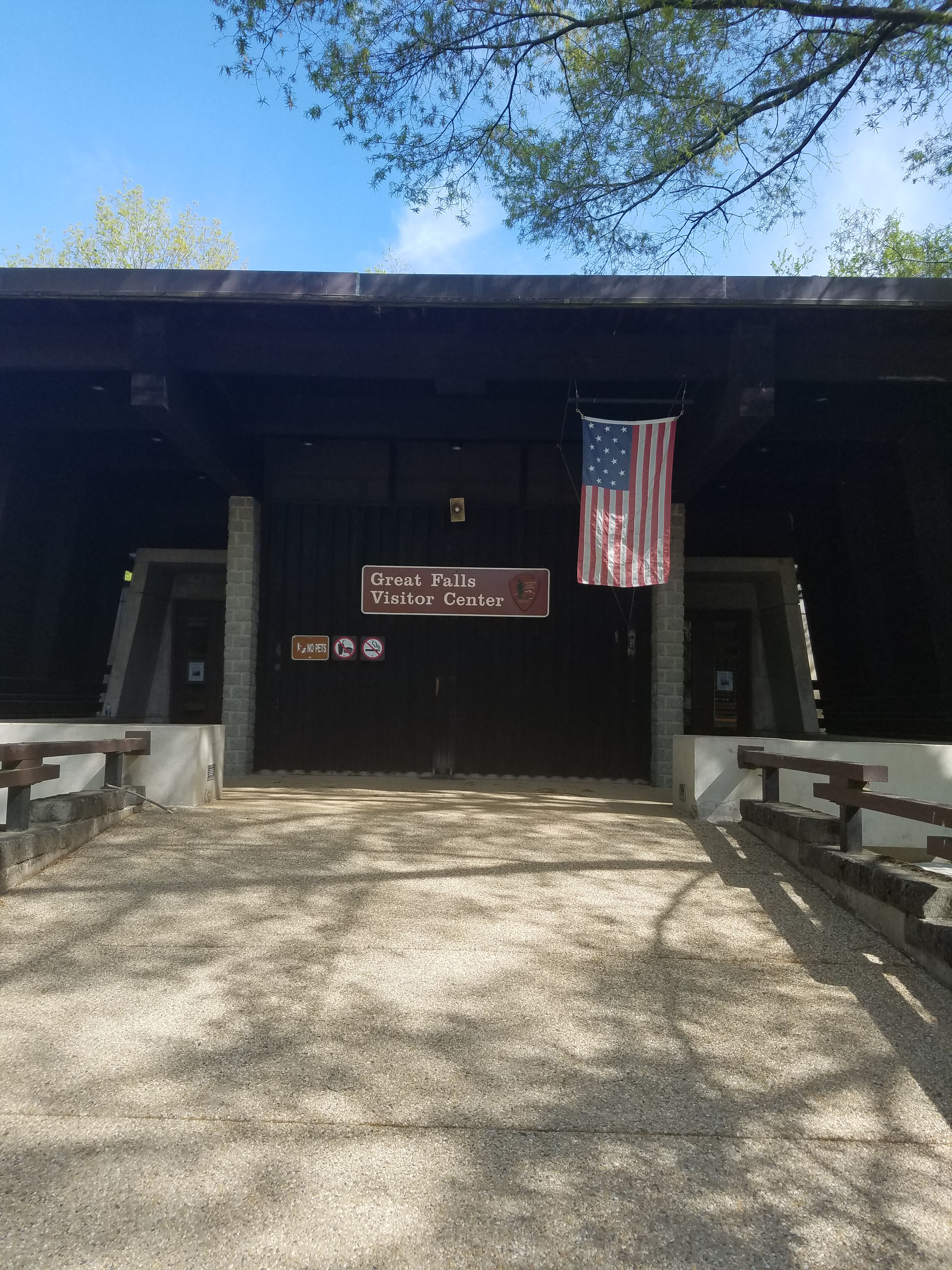
There are two movies available at the visitor’s center. One is an 8-minute history of Great Falls going back 10,000 years. The other is a 15-minute video on George Washington and his work on the Patowmack Canal.
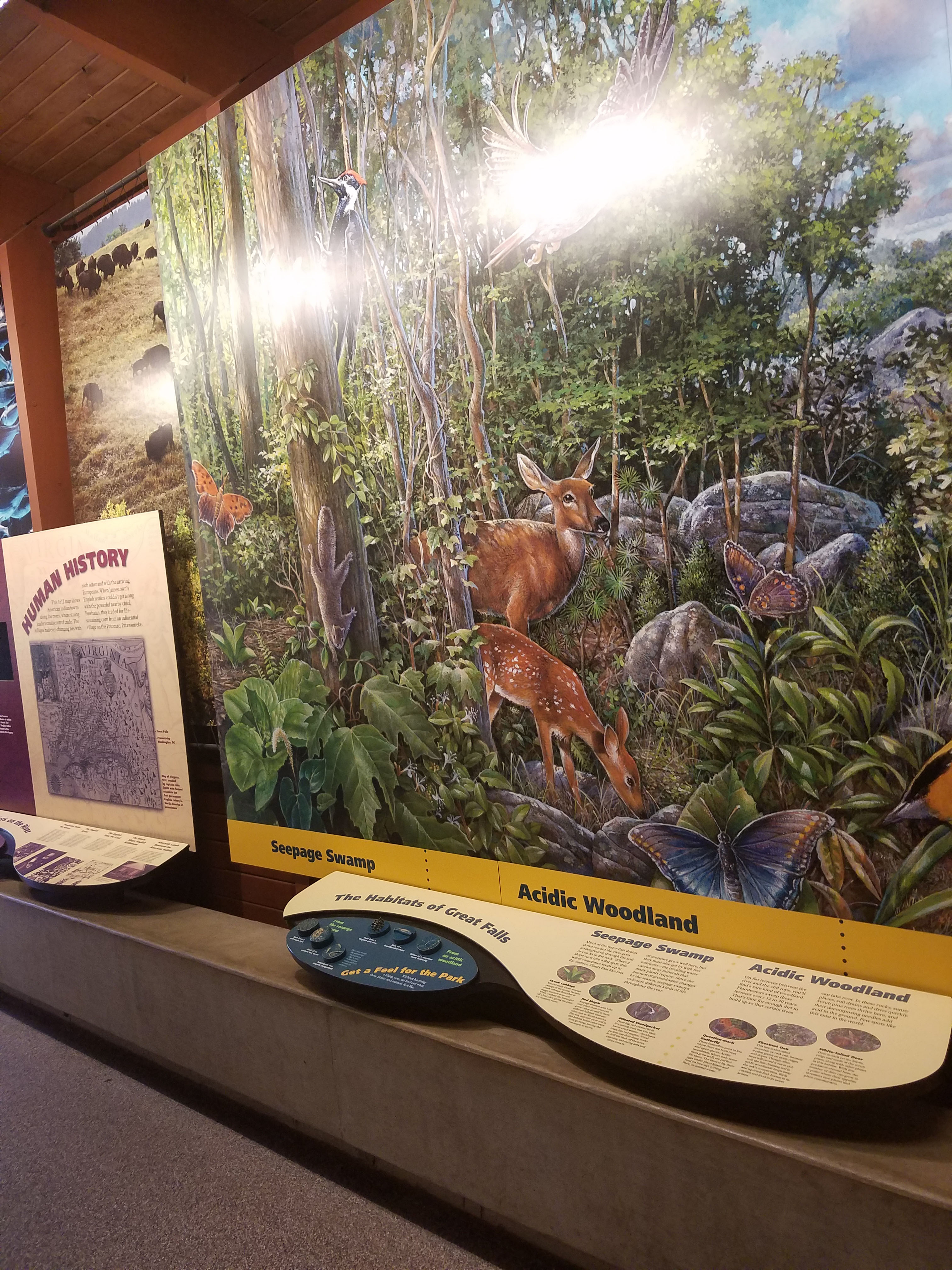
For younger children there is a play area and booklets encouraging kids to explore the park. This is part of the National Park system’s Junior Ranger Program.
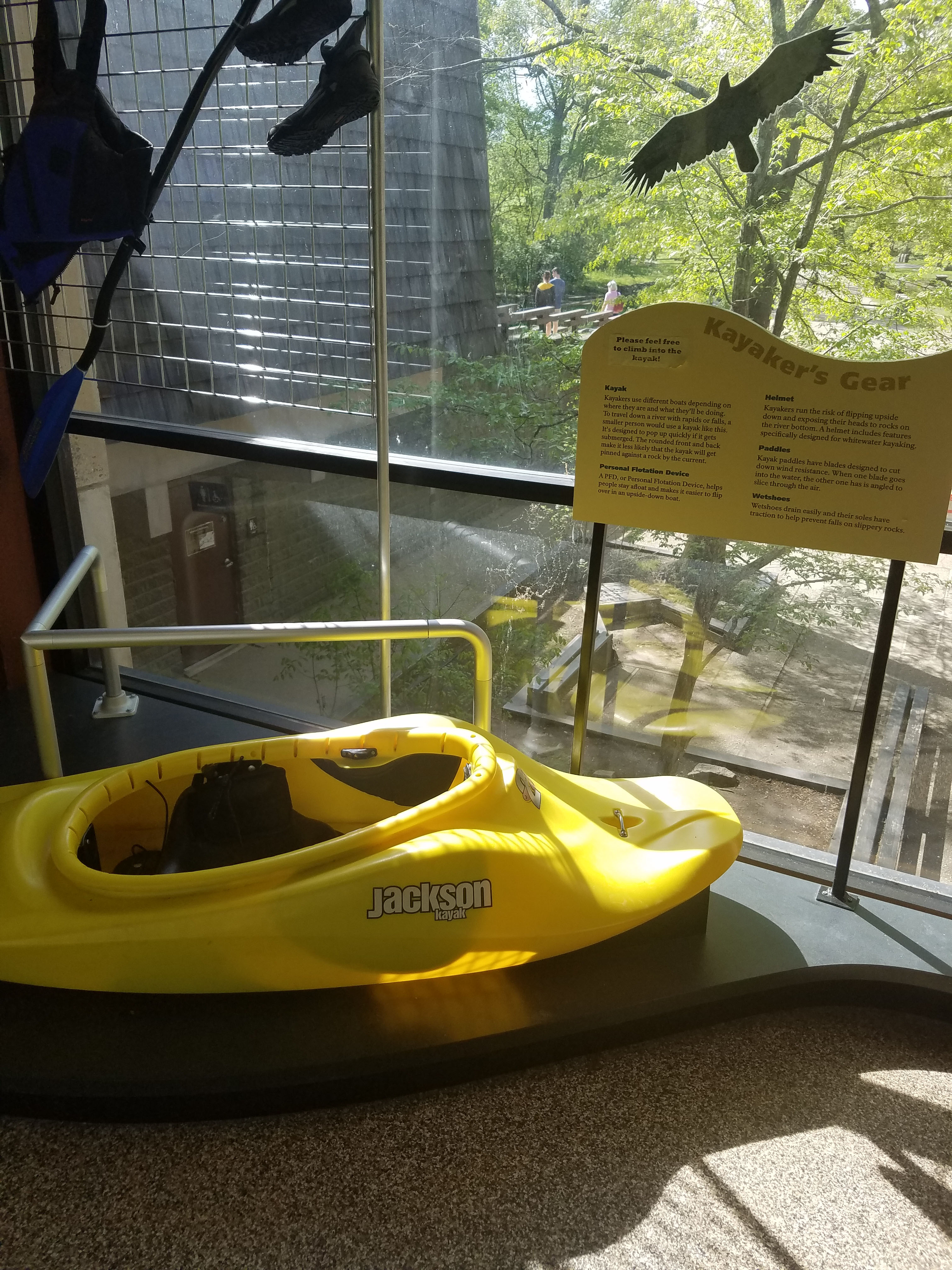
Viewing the Falls
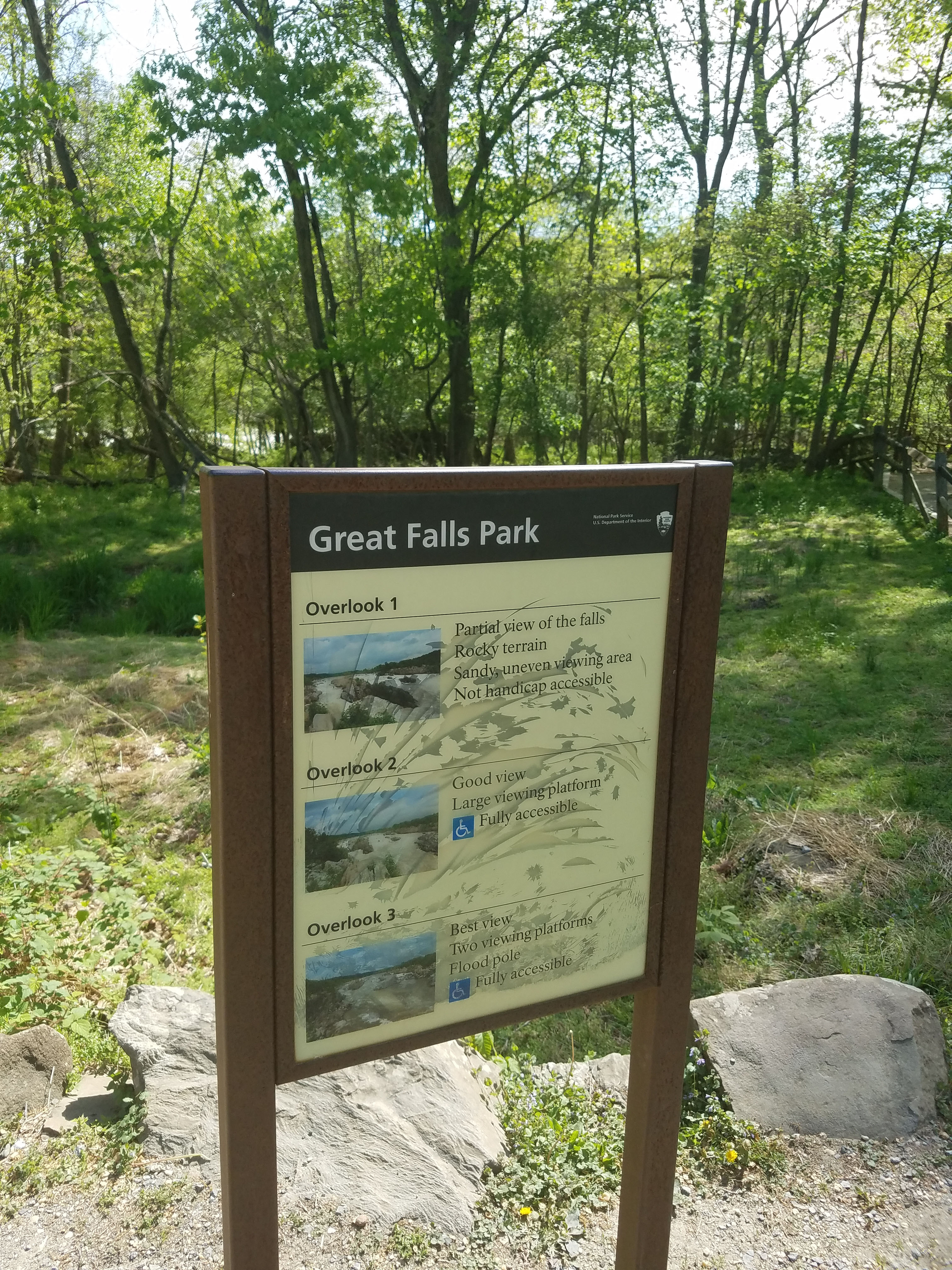
Directly from the visitor’s center there are three scenic overlooks. They are conveniently labeled Overlooks One, Two and Three. The overlooks are set on the cliff over the Potomac River and offer various views of the falls.
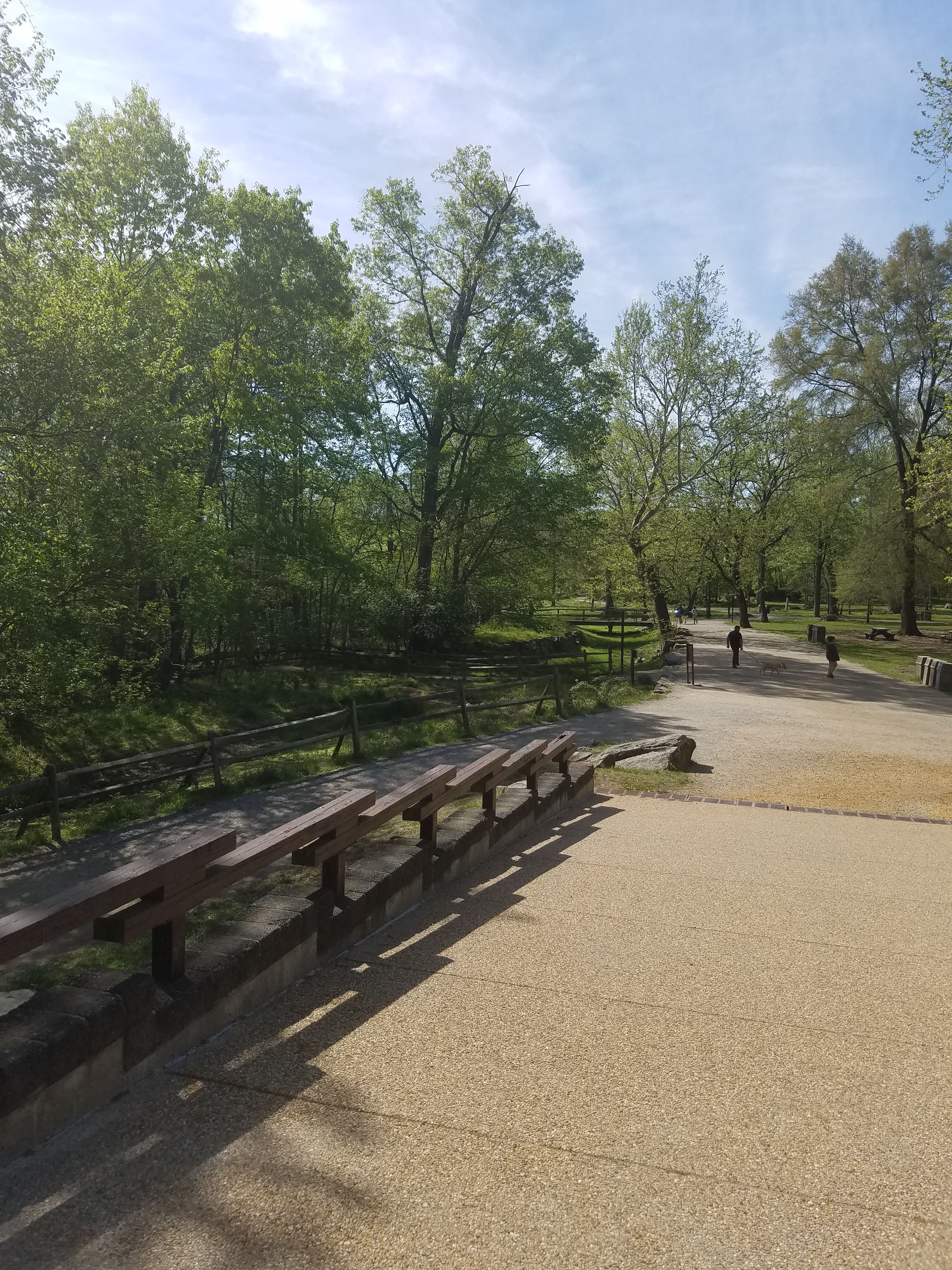
Overlook 2 and 3 are fully accessible while Overlook 1 involves some rock scrambling. All the overlooks are flat and a very short walk from the visitor’s center and parking area.
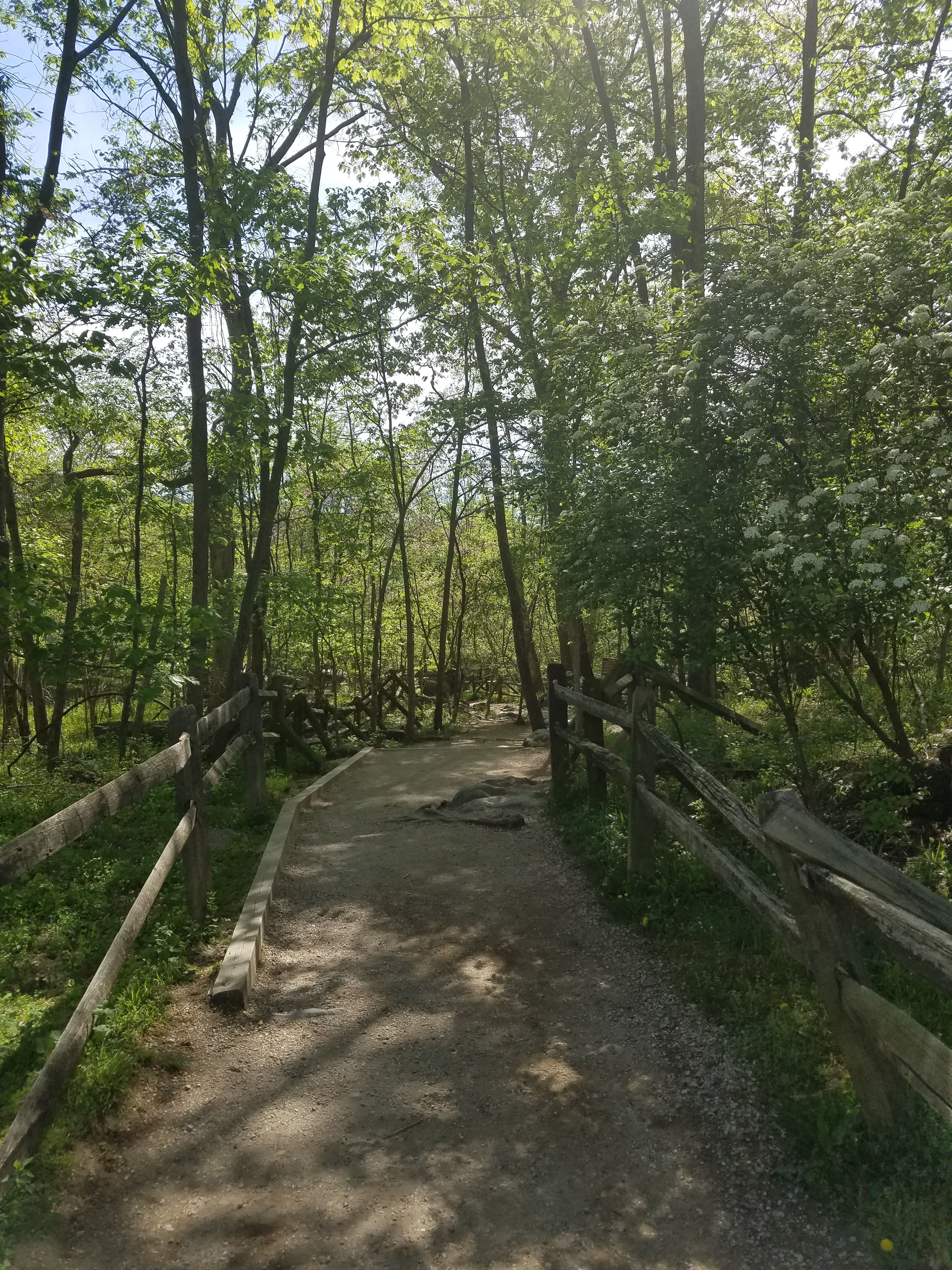
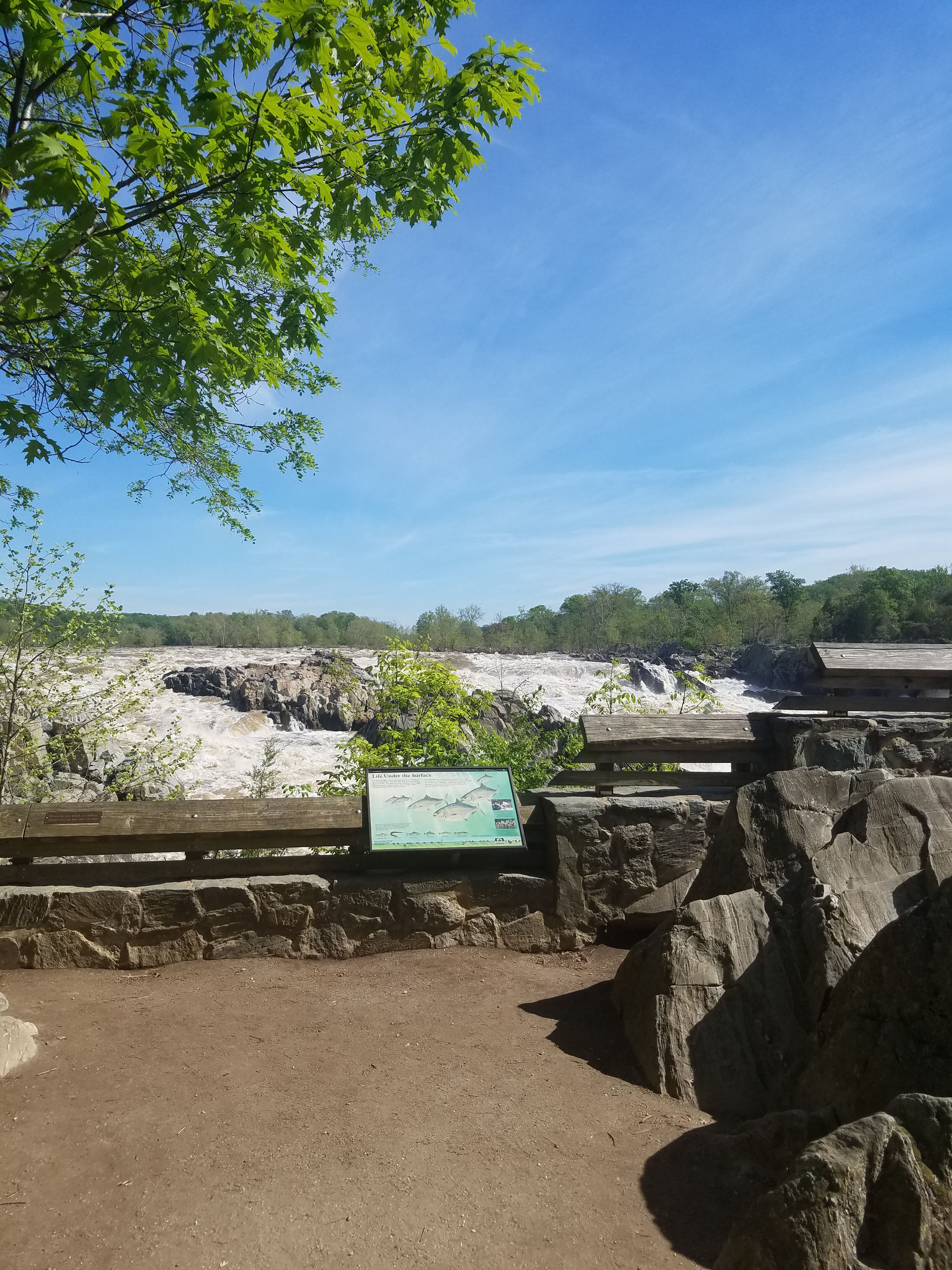
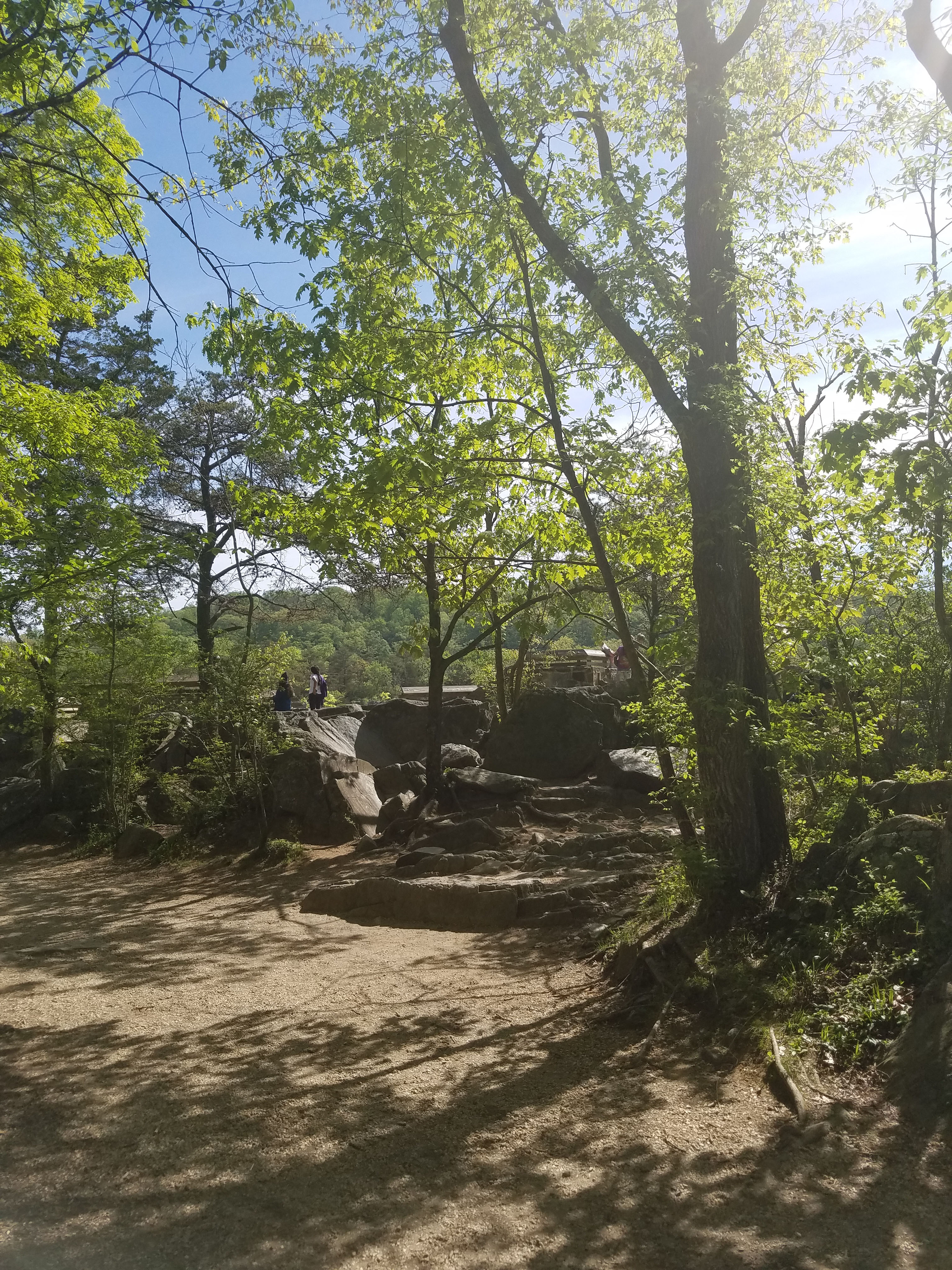
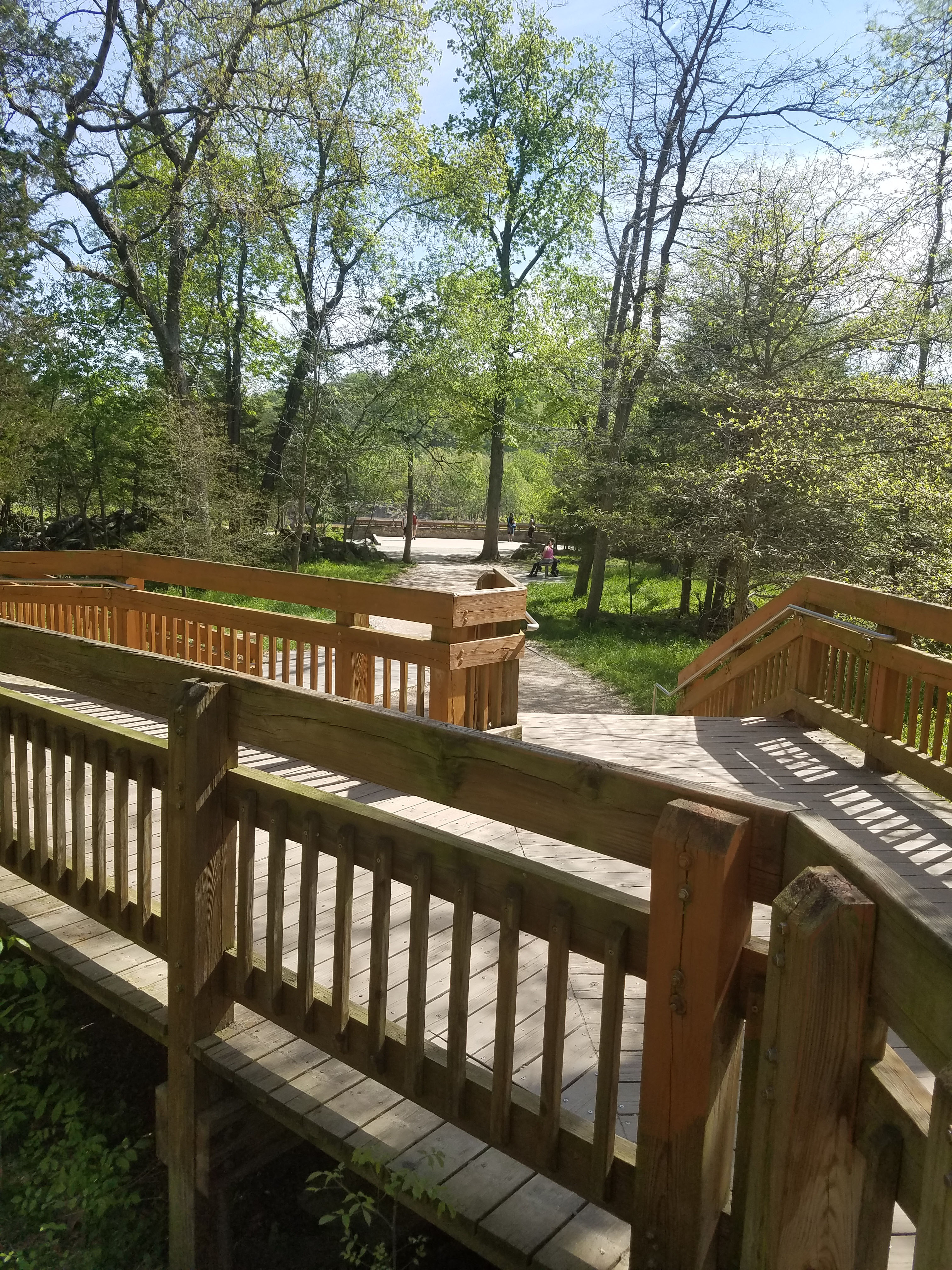
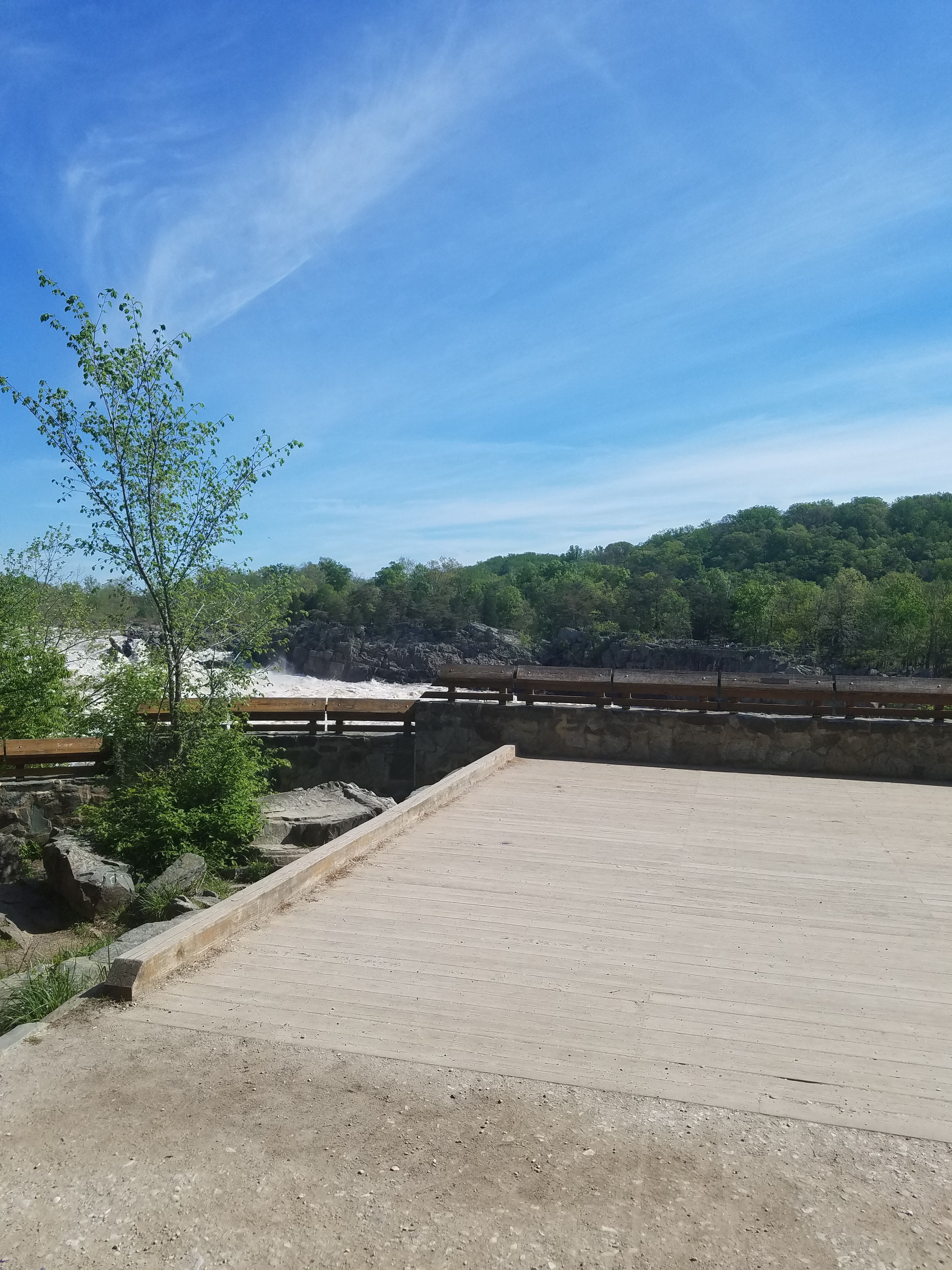
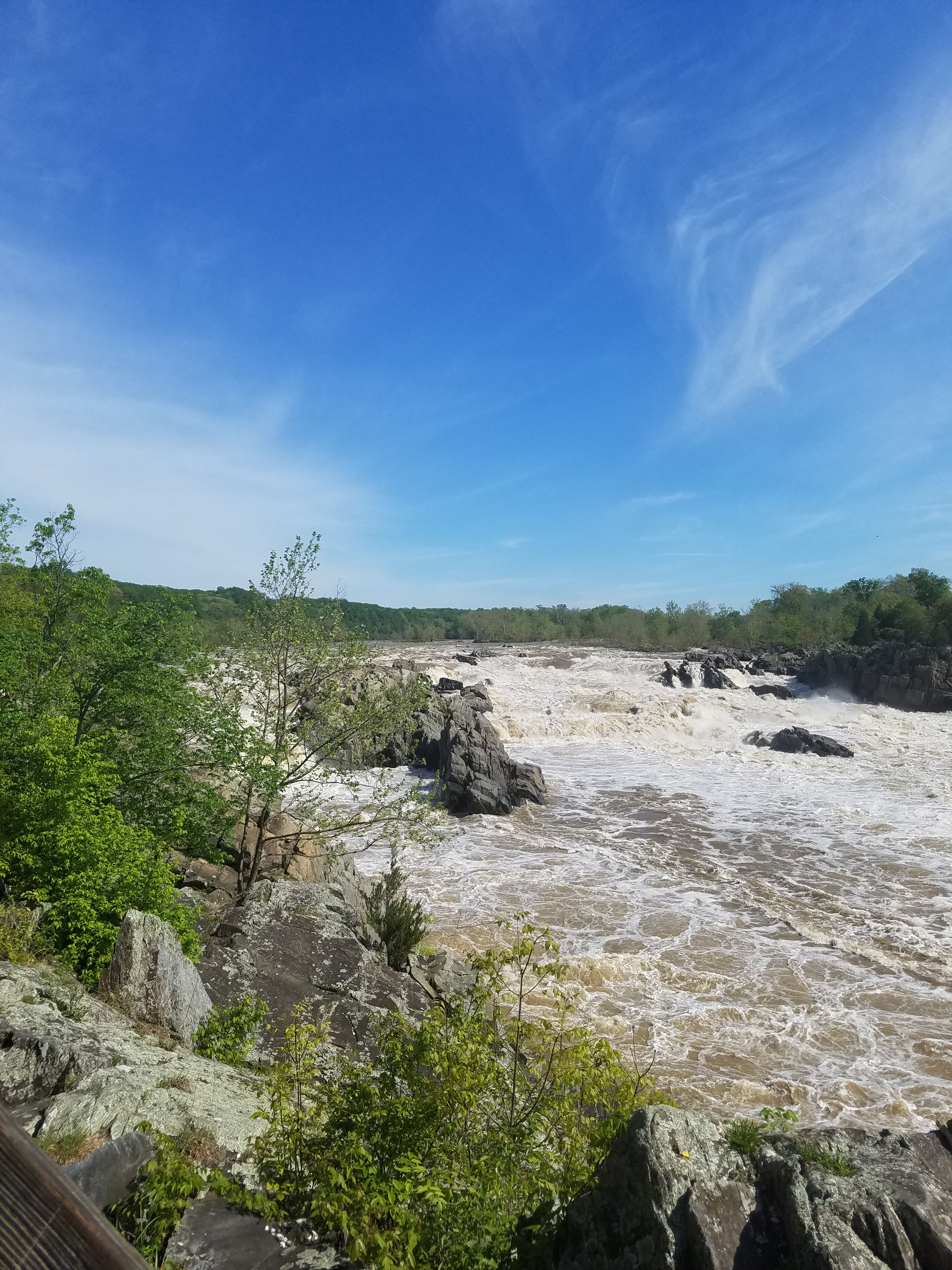
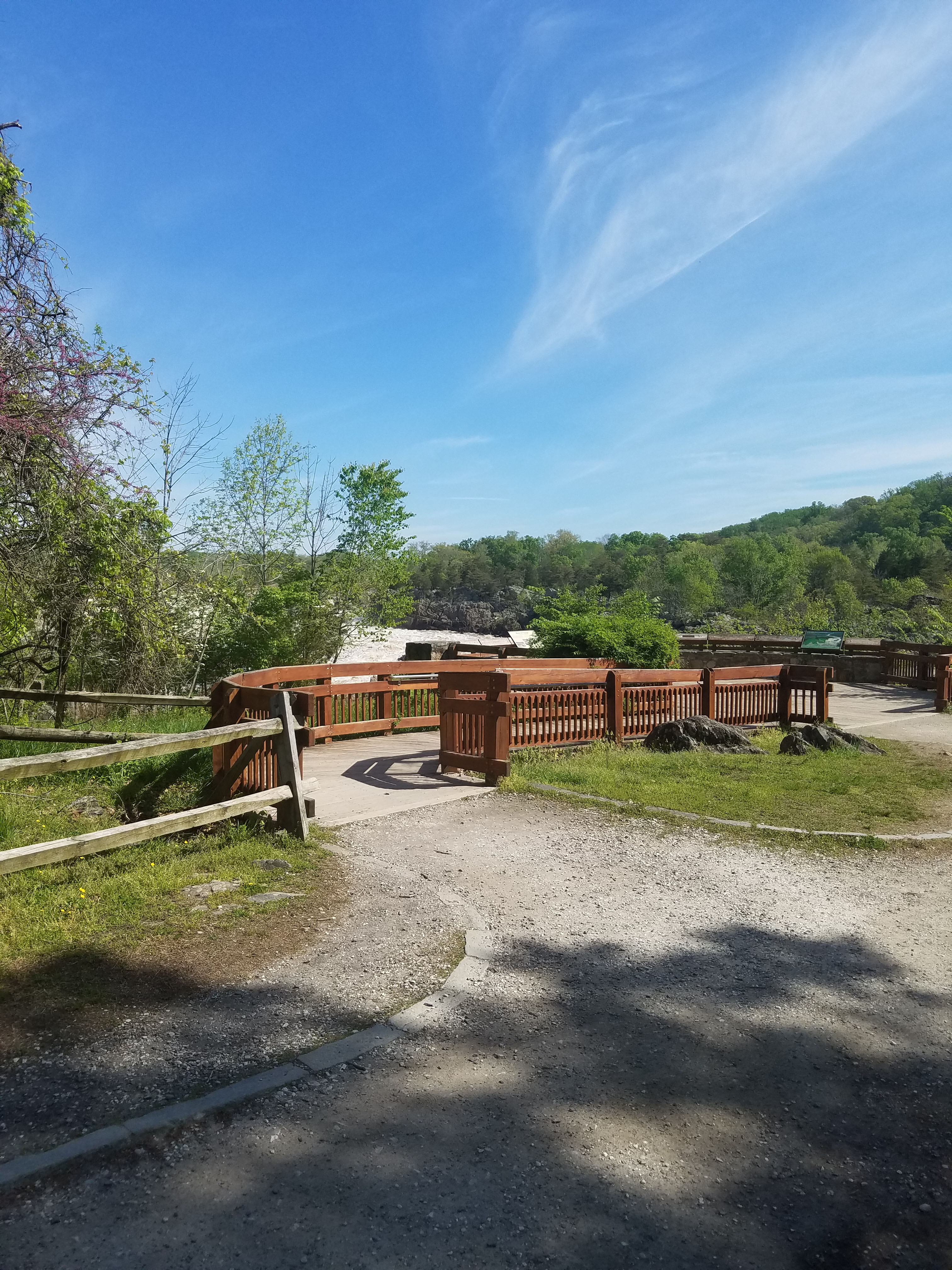
On the trail before overlook 3 you can see a description of flooding of this area. There is a post showing the water levels during some of the big floods. This highest water mark was in 1936. This is impressive when you see how far below the river generally runs.


If you walk further past the overlooks you will come to the Patowmack Canal area. When we visited in spring 2019 much of the southern portion was closed off for some reconstruction of the lock area. However, you can still see where the canal used to run.

Hikes
The main activity at Great Falls National Park is viewing the falls. We have had many quick visits here just to look at the falls. However, there are also 15 miles of hiking trails. Some of these are also available for biking and horseback riding.
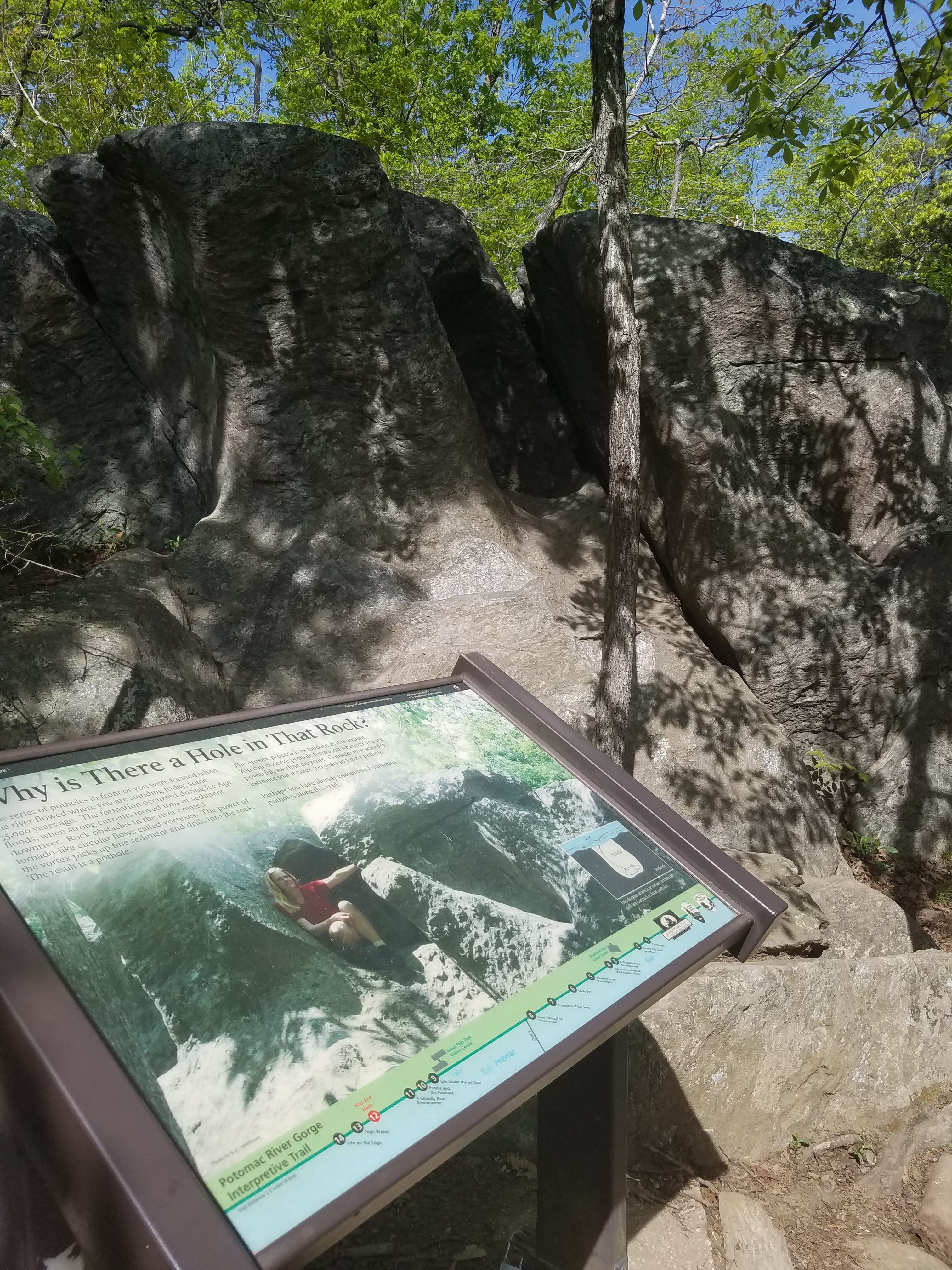
The trail system also links into outside trails. To the north is Riverbend Park. Riverbend Park is operated by Fairfax County and has an additional 10 miles of trails that connect directly to Great Falls.
To the south is the Difficult Run. Difficult Run is a 9-mile trail that goes through the Virginia countryside west of Great Falls. This connects into the 40-mile long Fairfax Cross County Trail system.
You can see the official guide to hiking Great Falls here.
We have come up with a nice 3-mile loop hike that goes from the visitor’s center to Mather Overlook in the south and the dam in the north. This is a flat hike but there is plenty of rock scrambling that can be done on the cliffs above the Potomac. Kids love this but caution is necessary, especially when getting near the river.
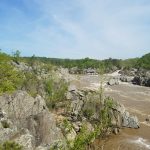
Note the extremely popular Billy Goat Trail is NOT in Great Falls National Park. It is across the river in Chesapeake and Ohio Canal National Historic Park.
